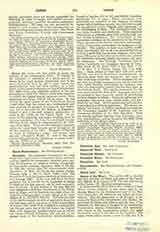

Canon (Gr. kanon, rule, law, guide), in music, the strictest of all contrapuntal forms. It consists in the imitation or repetition of a given melody or theme in its exact melodic progression and in the same rhythmical form by one or more voices, not simultaneously, but one after another, at a half, whole, or two, measure distance, on any of its intervals. The word canon was originally applied to the law according to which the various voices were expected to imitate the typical melody (proposta, guida), these imitations not being written out in notes. It was during the great period of the Netherlands School (1450-1550) that the canon as a contrapuntal art-form received its greatest development and perfection, but it remained for the Roman, or Palestrina, School to give it its most complete application—to make it the vehicle for the highest ideals. On account of the placidity and repose resulting from its extreme regularity, this form was employed by predilection in the finales of compositions for the Ordinary of the Mass. There are also instances, however, where the canon form is made use of throughout all the five numbers of the mass. Examples of this will be found in Palestrina’s mass, “Ad caenam Agni providi” (Complete Works, X), and in the same master’s five-part mass, “Repleatur os meum laude” (op. cit., XVII, 17, p. 105).
JOSEPH OTTEN

